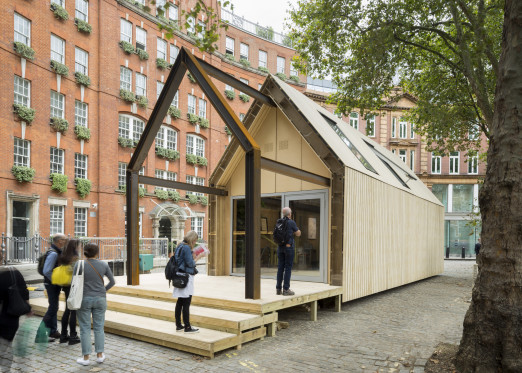As a student at Design Academy in Eindhoven 2012, Tom van Soest developed a blender to crush waste materials such as sinks, tiles and glass. It became the basis for StoneCycling, a company that creates bricks from ceramic, glass and other insulation material. The WasteBasedBricks are made from materials collected within 150-kilometre radius of their production partner. The brick production process is estimated to use 25% less energy than traditional processes.
Loop
Interview with Ward Massa, co-founder of StoneCycling
Could you tell us a little bit about your professional background(s) and how you got interested in the Circular Economy?
Ward Massa: We create a huge amount of waste. This has a big impact on the environment. In the Netherlands we create about 25 million tons of building and demolition waste each year. Finding better ways of upcycling waste will not only be the challenge of the decades to come but also creates huge economic opportunities.
(Courtesy of StoneCycling)
Unlocking the potential of the waste is super exciting. It is not only a technical challenge but also a social one. What is the perception we have of waste? How can we influence that in a positive way? This is what drives us. We believe better solutions can be achieved if we work together with already existing industries, combining technologies from different sectors and inviting people from all over the world to collaborate with us.
Could you describe your process of developing the business model?
Ward Massa: The business model is a fluid one. It keeps on changing. As a company we are good at creating new ideas and developing new products. For the production of our products we are happy to work together with other companies that have much more experience (often close to a hundred years). We have to be critical and find out where we can add the most value. Our design approach helps us to create products which are being included in unique projects around the world. Starting with the highest segment we can bring forth a strong message: building from waste is possible and our WasteBasedBricks are being used in iconic projects across the globe. This will set off a new way of thinking about waste, our economy and the future of the planet. The rest will follow.
How would you describe the different mindsets of Circular Thinking/Design for the CE versus traditional linear thinking for the linear economy?
Ward Massa: It is based on added value. What do you have the offer in the process and are you willing to work together with other people /
companies / institutes for all the other things? And it's based on a multi-disciplinary approach, combining design thinking with the old industries, science and the market.
(Ward Massa and Tom van Soest, Courtesy of StoneCycling)
What has been the most challenging part of the process?
Ward Massa: Developments go slow. Starting companies need to move fast. Finding the right type of funding to close this gap is a real challenge for companies like us.
How have the building industry responded to the bricks? How would you gauge the interest of architects, builders, in Circular Buildings generally?
Ward Massa: Overall the response is super positive. Architects are excited they are able to apply the centuries old brick in a new fashion. It not only gives them a waste-based alternative to the normal brick, it also gives them new possibilities in terms of colour, texture and shape of the brick. For real estate developers a different set of arguments is important. Building a more sustainable building is becoming increasingly interesting financially as well. Big corporations who need offices are more likely to rent an office which is made of sustainable materials. Having a facade made from waste gives them a unique story to tell their clients / customers.
For them, this is added value for which they are willing to pay. The same counts for private house owners. Being more conscious about the materials they use creates higher emotional value. They enjoy living in these houses more and get excited telling the story of their house to visitors. Construction companies are a bit more hesitant. They are, after all, responsible for the quality of the building. Working with new materials is therefore a potential risk. Offering independent test reports of our products helps. But having an architect and real estate developer that really support the waste-based approach works best.
Next steps?
Ward Massa:
1. Building more buildings with our products across the world.
2. Sales. Sales. Sales. We need architects and developers across the world to join the movement towards a circular world.
3. Upcycling more and new variations of waste.
4. Find additional funding to grow faster.
For anyone interested in this field, what books or articles would you recommend to read?
Ward Massa: The book Building from Waste by Dirk E. Hebel
For more information on StoneCycling click here




